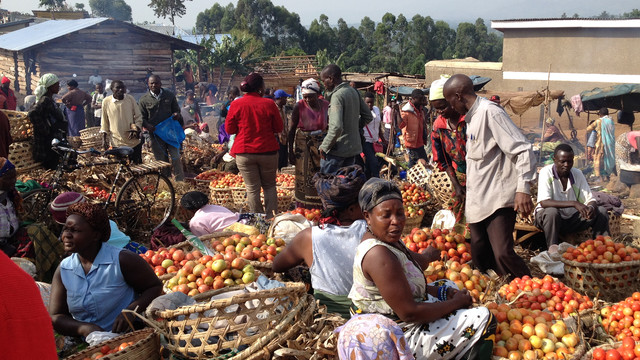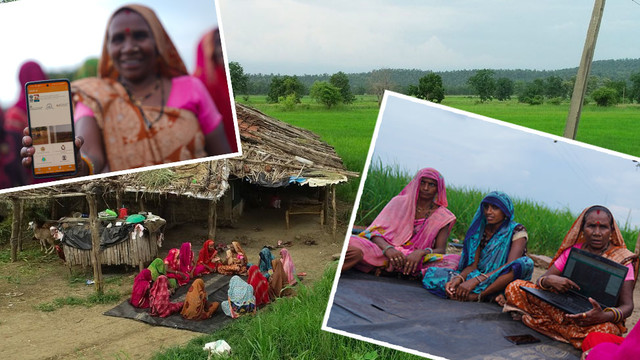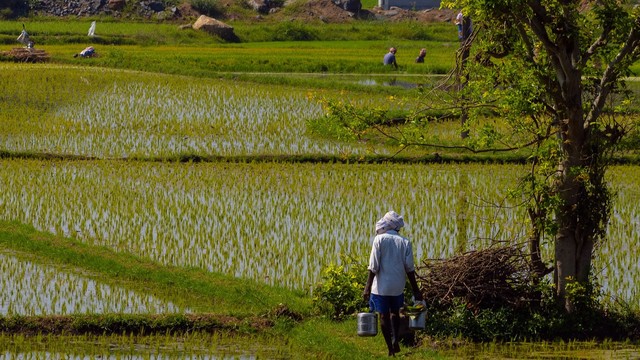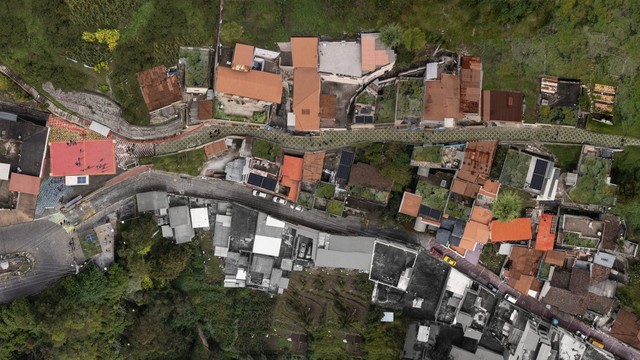A marriage to save the earth: Farmers and researchers innovate to conserve biodiversity
Traditional knowledge combined with the latest science could increase food production while safeguarding biodiversity, new research shows.


A farmer in the Potato Park, Peru (Photo: Adam Kerby)
We face a conundrum. Our growing population needs to oversee a significant increase in food production. Yet, increased food production is a key driver of biodiversity loss. How can we do one without destroying the earth's biodiversity? And how can we grow more in the face of growing climatic challenges?
Delegates gathering for the 12th Conference of the Parties to the Convention on Biological Diversity (CBD COP12) in South Korea keen to find answers to these questions can learn from research carried out in 2013.
The qualitative baseline study conducted with 64 smallholder and indigenous farming communities revealed that over the past 30 years the communities have made many changes to how they live and farm in order to adapt to a changing climate. They have innovated to survive, changing the ways they support their families, their farming systems and the crops they are growing.
All the communities from the Peruvian altiplano, to the highlands of China, the drylands of Kenya and the Himalayan foothills in India have found it difficult to produce food in a changing climate, particularly in the last 10 years. The key problem almost all the communities face is that rainfall is less plentiful and more erratic. Weather events are also more extreme, and there has been an increase in pests and diseases.
People in southwest China have experienced drought for the last four years. In the Central Himalayas, crop productivity has sharply declined in the last five to seven years. In coastal Kenya, people have switched from maize to the more drought-resistant cassava, as they were going hungry during droughts. As economic conditions have become increasingly difficult, people have been migrating to towns over the past decade and, in the case of China, at a faster pace than before.

All the communities have developed new technologies and practices to confront these challenges, using traditional knowledge and crop varieties, alongside modern technologies. In coastal Kenya, some farmers have started planting improved, hybrid and traditional varieties together, especially maize and cassava, to reduce the risk of crop failure. While modern varieties mature fast, they cannot tolerate pest, disease and water stress, unlike traditional varieties.
 In Guangxi, southwest China, communities have switched to drought-tolerant crops and varieties, such as maize landraces, which have proved far more resistant to drought than their modern equivalents.
In Guangxi, southwest China, communities have switched to drought-tolerant crops and varieties, such as maize landraces, which have proved far more resistant to drought than their modern equivalents.
Many farmers are actively experimenting with breeding new varieties, domesticating new crops and improving their cropping systems. In the central Himalayas, an improved radish variety was developed by crossing a hybrid and traditional variety.

In the eastern Himalayas, farmers have developed new cultivars of black bean rice, which produce a higher yield. A new cardamom variety and cropping system ensures good production, despite an increase in pests and diseases and reduced soil moisture.
Farmers in Kenya have developed new livestock breeds that are both more productive and drought-resistant by crossing indigenous with hybrid breeds. They have worked out how to grow several wild species 'on farm', for domesticating forest food and medicinal plants.
In all cases, traditional knowledge has provided the basis for developing new bio-pesticides. It has also generated effective new treatments for livestock diseases and, in many cases, new techniques to improve soil fertility and moisture.
 In the Potato Park of Peru, farmers are gradually selecting native potato cultivars resistant to pests, diseases and frost, and have developed a new way to prepare the land to maintain soil humidity.
In the Potato Park of Peru, farmers are gradually selecting native potato cultivars resistant to pests, diseases and frost, and have developed a new way to prepare the land to maintain soil humidity.
The rise in temperature has brought increased pests and diseases and forced them to the top of the planting line. Thanks to an agreement with the International Potato Center (CIP), they now have more than 1,400 different native potato varieties and are working with scientists to test them in different parts of the landscape.
The Potato Park communities have also developed a number of community enterprises with external researchers to generate income, including new potato-based food and personal care products and a potato restaurant. They have also established several new institutions, including the association of Potato Park communities and various economic collectives.
Policy innovations include a collective Potato Park trademark based on customary laws, an inter-community biocultural protocol for benefit-sharing, and a potato repatriation agreement with CIP that has brought back 400 native varieties that had been lost.

In southwest China, farmers and scientists have jointly bred new maize varieties that are more drought-resilient and produce 30 per cent higher yields. These new varieties, along with innovations to link farmers to urban consumers, have increased incomes by 30 per cent compared to villages not involved in the project, and have increased the number of young people returning to the villages.

These innovations have also halted or reversed the decline of biodiversity, unlike in other villages where crop diversity has declined rapidly in the last 10 years.
The research shows that access to new information and technologies (such as seeds), both from within communities and from external partners, is critical for innovation. Although traditional knowledge and crop varieties have formed the basis of the innovations, amalgamating modern knowledge and techniques, and adapting modern varieties has also played a crucial role.
Adopting new techniques and varieties does involve risks, however. Adopting modern varieties has been a key driver behind the loss of local crop diversity, such as local seed banks in Kenya. The value of local varieties and knowledge needs to be recognised both by the farmers and their external partners, so they are protected and saved for adaptation in the future.

Successful initiatives, such as those in China and Peru, suggest that innovative approaches where farmers and researchers innovate together can successfully enhance biodiversity and ensure that communities can harvest enough food.
These farming innovations are developed by smallholders, often women and elderly farmers, based on their traditional knowledge of crop varieties and farming methods, in partnership with the new expertise provided by external researchers and scientists. But while traditional values, beliefs and institutions are critical, so too is linking products to markets in order to make them financially viable.
Like all marriages, the key to success is to recognise the complementary role traditional knowledge and science bring to the partnership, and to continue to adapt and change with the times.
More details
Smallholder Innovation for Resilience (SIFOR) is a project coordinated by IIED, Asociacion ANDES (Peru), Centre for Chinese Agricultural Policy (China), Kenya Forestry Research Institute (Kenya), and Lok Chetna Manch (India)
Findings of the SIFOR baseline study in Peru and China will be presented at a side event at the CBD COP12, on Friday, October 10 (18.15): Developing biocultural innovations for resilience: Linking biological and cultural diversity in agricultural systems
SIFOR: Qualitative baseline study, Central and Eastern Himalayas, India
SIFOR: Qualitative baseline study, Mijikenda community, Kenyan coast
Krystyna Swiderska (krystyna.swiderska@iied.org) is principal researcher in IIED's Natural Resources Group.



